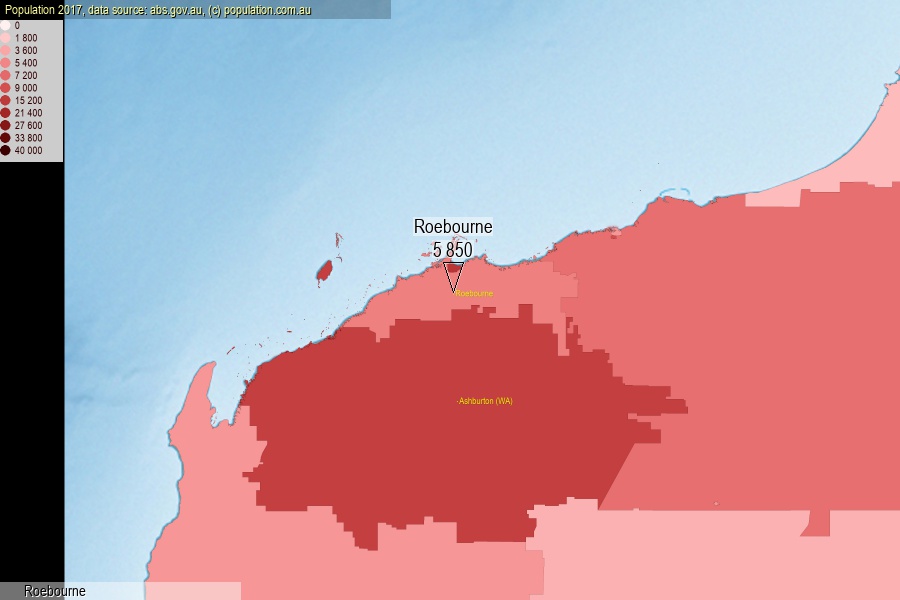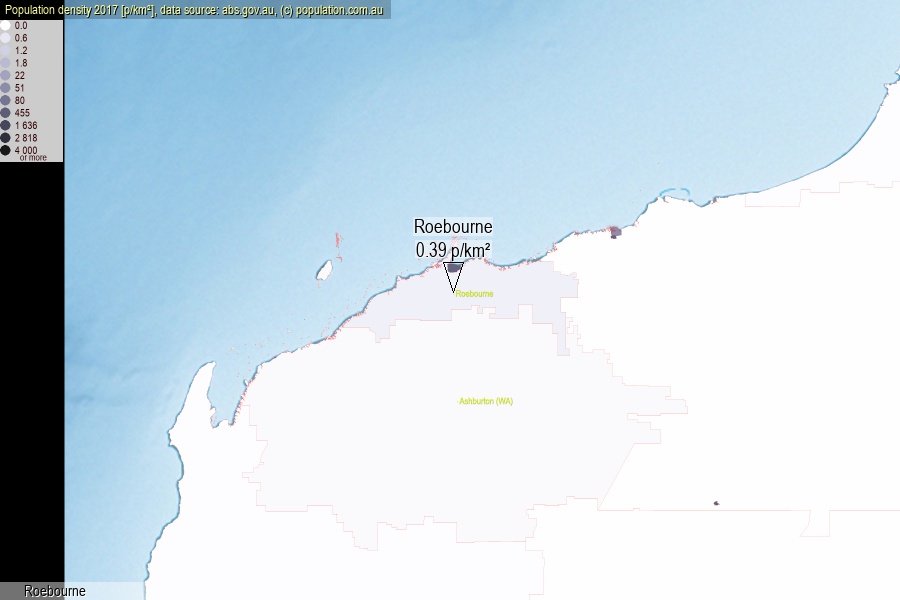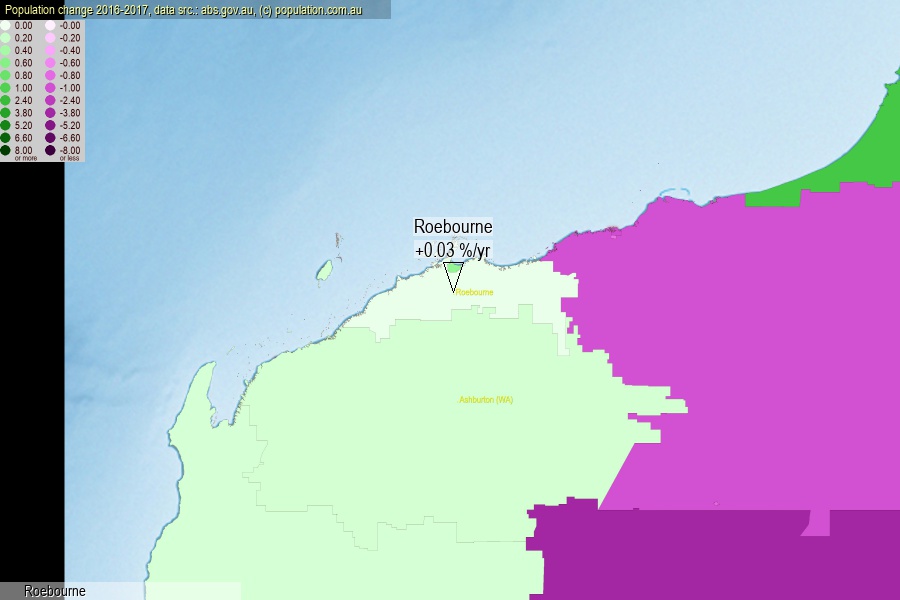 population.com.au
population.com.auLast official estimated population of Roebourne (as Statistical Area Level 2) was 5 850 people (on 2017-06-30)[2]. This was 0.02% of total Australian population and 0.226% of WA population. Area of Roebourne is 15 104.90 km², in this year population density was 0.39 p/km² . If population growth rate would be same as in period 2016-2017 (+0.03%/yr), Roebourne population in 2025 would be 5 866. [0]



Click to enlarge. Roebourne is located in the center of the images.
Population [people], population density [p./km²] and population change [%/year] [2]
View borders » (new window) [4]
[2001-2002] +4.36 %/Yr.
[2002-2003] +4.62 %/Yr.
[2003-2004] +3.86 %/Yr.
[2004-2005] +3.83 %/Yr.
[2005-2006] +4.58 %/Yr.
[2006-2007] +3.21 %/Yr.
[2007-2008] +3.40 %/Yr.
[2008-2009] +4.27 %/Yr.
[2009-2010] +1.86 %/Yr.
[2010-2011] +4.15 %/Yr.
[2011-2012] -0.77 %/Yr.
[2012-2013] -1.08 %/Yr.
[2013-2014] -3.35 %/Yr.
[2014-2015] -4.09 %/Yr.
[2015-2016] -3.02 %/Yr.
[2016-2017] +0.03 %/Yr.
[0] Calculated with linear interpolation from officially estimated population
[1] Read more about SA2 and Australian Statistical Geography Standard (ASGS) on abs.gov.au
[2] Population data from Australian Bureau of Statistics (Population and density: 2017; change: 2016-2017)
[3] Digital Boundaries: Australian Statistical Geography Standard (ASGS) 2016.
[4] Border coordinates are simplifyed using Ramer-Douglas-Peucker algorithm.